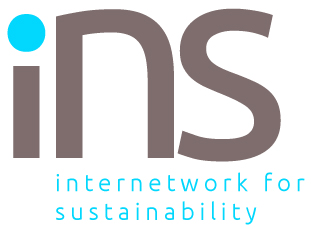
European nature faces an ongoing crisis. While certain environmental indicators in Europe—like urban air quality and industrial pollution—have improved since the 1970s, the region’s biodiversity is in sharp decline. Wildlife, plants, and insects are vanishing, with a staggering 57% drop in farmland birds alone. Although urbanization, invasive species, and industrial pollution have contributed to this decline, agriculture is the largest factor. The Common Agricultural Policy (CAP), aimed at supporting food security and protecting nature, has paradoxically intensified environmental damage.
The CAP, which represents about a third of the EU’s budget (€55 billion annually), was meant to address sustainability alongside supporting farmers. It grants financial rewards for environmentally friendly practices, like planting trees or conserving wetlands. However, these measures have largely failed to protect biodiversity. Reports from the European Court of Auditors and the European Environment Agency reveal little to no positive impact on biodiversity. According to a 2023 report, only 14% of habitats and a quarter of non-bird species are classified as “good.” Compounding the issue, 80% of CAP funds support carbon-intensive animal agriculture, exacerbating climate change.
Critics, including Faustine Bas-Defossez from the European Environmental Bureau, argue that the CAP now incentivizes unsustainable farming. Bas-Defossez calls the CAP a “monster,” subsidizing destructive practices and reversing the “polluter pays” principle into “the polluter gets paid.” Pieter de Pous of the think tank E3G describes it as a “policy in search of a justification,” highlighting its political sensitivities tied to European identity and rural depopulation.
Welfare for the rich
Following pressure from farmers, the EU’s already modest environmental protections under CAP are further weakened. Farmers leveraged the European Commission’s fears of a backlash from the public and green parties in the June parliamentary elections. However, this move primarily benefits large landowners rather than small farmers. CAP payments are based on land size, favoring large-scale farms and pushing small family farms to the margins. The system, which was originally designed for food security, now enriches the largest players while doing little for smaller farms and is often described as “welfare for the rich.”
Historically, European agriculture policy focused on maximizing yields to ensure food security. In the 1960s, the CAP encouraged farmers to adopt machinery, fertilizers, and pesticides, alongside guaranteed prices and quotas. However, this approach led to infamous excesses, like the EU’s “butter mountain” and “wine lake.” Reforms in the 1980s shifted CAP payments from production quotas to direct subsidies based on land size, incentivizing large farms over small ones.
Many experts, including Ariel Brunner of BirdLife Europe, argue that the CAP’s impact has been socially detrimental. While CAP subsidies may provide some support to small farmers, they primarily bolster big landowners, retailers, and suppliers, who rely on subsidies while keeping profits high. Will White from the Sustain coalition highlights how supermarkets and middlemen profit from CAP, leaving small farmers in a cycle of dependence on intensive farming practices.
Ironically, the current structure of CAP costs consumers more while failing to deliver environmental or economic benefits. Politicians, meanwhile, face pressure from powerful farmer protests. Despite the growing urgency of the climate crisis, agriculture and land-use changes contribute nearly a fifth of global greenhouse emissions, yet there’s little sign of effective climate action in the farming sector.
Recent dialogues offer a glimmer of hope. In September, European stakeholders—including farmers, retailers, environmentalists, and consumer groups—discussed a proposal for “urgent, ambitious, and feasible” reforms. This plan emphasizes sustainable farming and recognizes the need for dietary shifts towards plant-based foods, which experts agree would reduce the environmental burden of livestock farming.
Building a sustainable food system, though challenging, is achievable. Ed Davey of the World Resources Institute states that farming can work in harmony with nature. However, fundamental reforms to CAP will require separating the interests of large and small farms. While large farms benefit from intensive methods, small farms could thrive with quality-focused, organic production.
Consumers need to act
Consumers also play a role in driving change. About 80% of EU farm subsidies go to animal agriculture, which heavily impacts greenhouse emissions. Reducing demand for intensively farmed meat, paired with healthier diets, could alleviate the environmental pressure on farmland. However, shifts like these can be politically charged, as seen in the Netherlands, where opposition to national herd limitations fueled far-right support.
Global hopes for redirecting agricultural subsidies toward sustainability may seem idealistic, but such change is possible with political will. Farming subsidies, after all, are human-created systems. As White from Sustain suggests, if farmers see clear financial benefits to sustainable practices, they are more likely to adopt them.
In the long term, subsidies need to support a sustainable food system capable of feeding an ever-growing global population without further harming biodiversity or the climate. As the climate crisis accelerates, it’s imperative for European leaders to reframe the CAP in a way that truly benefits both farmers and the environment.
Read the full report in The Guardian











